For this article, we traveled coastward from the North-South midway point of East Texas into the Gulf Coast Prairies eco-region.
We stopped in Chambers County, where most of the ranchers descended from two or three pioneers who settled the area in the 1800s.
The Native Prairies Association of Texas identifies this region as Gulf Prairies and Marshes because the land is interspersed with marshes or bogs that range in size from a few square feet to several acres.
Elevation ranges from below sea level to approximately 150 feet. This region is nearly level with slow to no drainage and is dissected by numerous rivers and bayous that flow into the Gulf of Mexico.
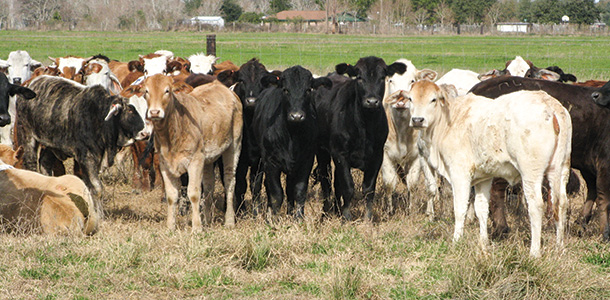
Soils are black clay in the low areas and sandy loam at the higher elevations. Sand dunes or ridges are found along the beaches. Gulf Coast Prairies occupy approximately 9.5 million acres along the Texas coast.
Annual rainfall varies from 20 to 50 inches, normally distributed uniformly throughout the year. When rainfall is not evenly distributed, drought periods can occur as they did during 2013.
Native prairie grasses include little bluestem, brownseed paspalum and indiangrass. These grasses disappear when land is subjected to saltwater from tidal influx and hurricanes and are initially replaced by common bermudagrass and carpet grass.
If the saltwater recedes, the prairie grasses begin to re-establish in a minimum of three years, if rainfall occurs and washes the salt from the soil.
In addition to seashore saltgrass, various species of cordgrass, sedges and rushes grow in the marshes and in soils with high salt content.
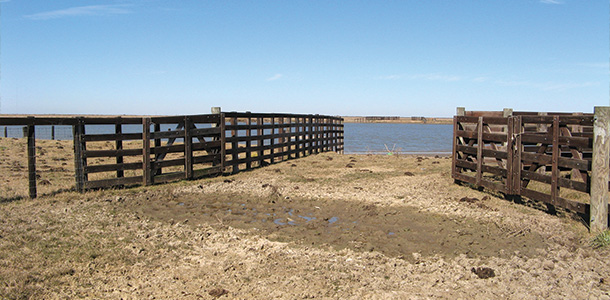
The legacy
Anglo-Saxon ranching began in Chambers County during 1821 when James Taylor White I and his wife, Sarah Cade, journeyed from St. Martin’s Parish, Louisiana, to Texas with 12 longhorn cattle.
White’s first trip to Texas was in 1819 when he claimed his Spanish land grant and built a house for Sarah.
Cheap land lured White to Chambers County. Under Spanish law, each household was entitled to 4,428 acres of grazing land and 177 acres of farmland for $60.
The lowest price for undeveloped land in the U.S. at this time was $1.25 per acre.
It has been documented that White’s herds ranged from 1,300 to as many as 10,000 head. He continued to receive land grants from Mexico after the country won its independence from Spain.
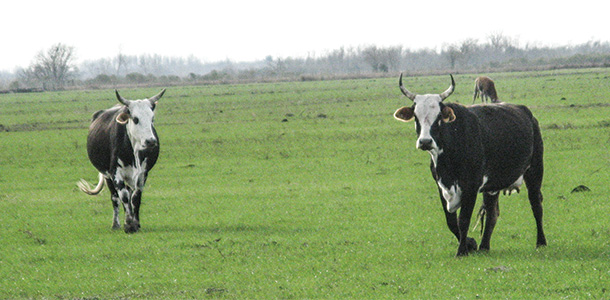
His land holdings eventually totaled hundreds of thousands of acres, and the ranch continued to operate through six generations of James Taylor Whites.
The farms were eventually purchased from the other heirs by Steven White, and the ranch was bought by Bill White.
Approximately 15 to 20 miles from the White Ranch is the Jackson Ranch. Humphrey Jackson’s first wife, Elizabeth, was an older sister to James Taylor White I.
Jackson came to Texas from St. Martin’s Parish in 1823 with the original 300 of Stephen F. Austin’s colonists and received land in Harris County.
In 1847, James Jackson, a son of Humphrey, moved to Chambers County and began building the Jackson Ranch.
The ranch is now partially owned by a sixth-generation family member, Karla Jackson Dean. Karla leases the remaining acreage from family members, and she and her husband, Clay Dean, manage the entire ranch.
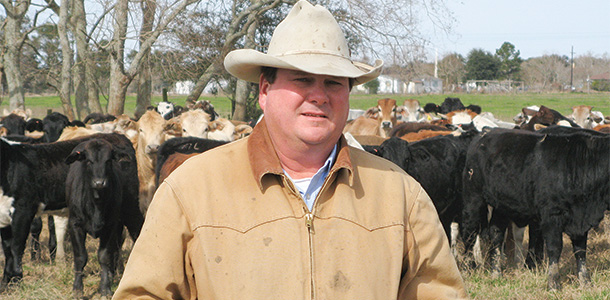
Adjacent to the White Ranch at several points is the Edwards Ranch, currently managed by David Edwards. The Edwardses also became established in Chambers County through Spanish land grants issued in the 1800s.
David’s father was Bill Edwards, the only child of William Taylor Edwards and Anna White Edwards. He was also the great-great-grandson of James Taylor White I and the grandson of Robert Monroe White, a graduate with the first class from Texas A&M in 1878.
Challenges of a harsh country
“This country can be tough on cattle,” says Clay Dean, who moved to the Gulf Coast after marrying Karla Jackson. “Our normal wet conditions help internal and external parasites thrive as well as disease organisms.
Internal parasites include intestinal worms and liver flukes. The external parasite list is long and includes horn flies, face flies, heel flies, stable flies, gnats and ticks.”
“Flying insects are a continual problem and make it tough to raise cattle,” says Bill White. “Mosquitoes become so numerous; they look like a black cloud moving across the pasture.
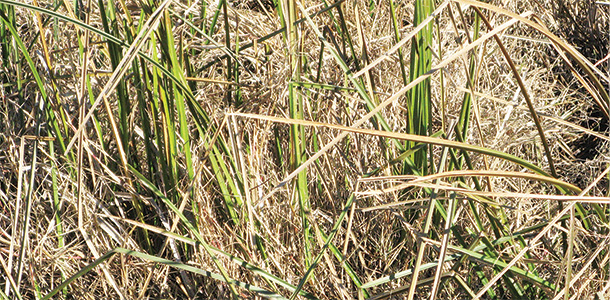
They suck enough blood from animals to make them anemic, and they often kill small calves. Other abundant blood-suckers include deer flies and green-head horseflies.
“A previous challenge came with the brucellosis program initiated in 1989,” continues White. “Southeast Texas was considered the source of the scourge.
The problem I had and still do is that brucellosis tests often give false positives. Before someone tells me that I need to sell a third of my cattle, they had better have a reliable test for identifying the disease.”
Regardless of his concerns, White followed the government protocol. After the first testing, he sold 1,200 head of cattle and continued vaccinating. By 1993 he had the largest certified brucellosis-free herd in the state, 3,600 cows.
“My current concern is trich (trichomoniasis),” adds White. “We palpate all our cows every fall and separate the open cows from the rest of the herd.
Those that don’t become pregnant the second year are culled. We vaccinate our bulls and test them for trichomoniasis every two years. Currently, our herds are trich-free.”
“Vaccines are important for keeping our cattle alive,” says Edwards. “We vaccinate against several diseases including respiratory (IBR-BVD Types 1 & 2-PI3-BRSV), clostridial (blackleg, enterotoxemia, malignant edema, black disease and four others), lepto (leptospirosis) and vibrio (vibriosis). We use wormers to control internal parasites and pour-on insecticides to reduce external parasite populations.”
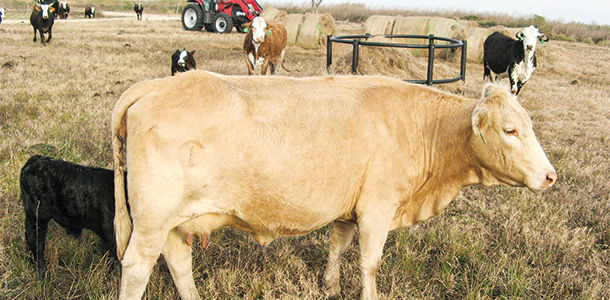
“To survive in this country, cattle have to have some ear (Brahman) in them,” says Dean. “We cross Brahman cows with Angus, Hereford and Charolais bulls.
The European bulls provide good carcass traits and the Brahman cows have the needed resistance to parasites, disease and our summer heat.
Brahman cows are good mothers and know how to forage for something to eat. When the percentage of ‘ear’ in the crosses becomes too low, we breed back to Brahman bulls.”
Surviving hurricane season
Hurricanes can present huge challenges to the Gulf Coast cattle business. The last big hurricane was Ike, which slammed into Chambers County during the early morning hours of Sept. 13, 2008.
Ike was the third-most destructive hurricane to ever hit the U.S., with approximately 70 reported deaths and an estimated property damage value of over $30 billion.
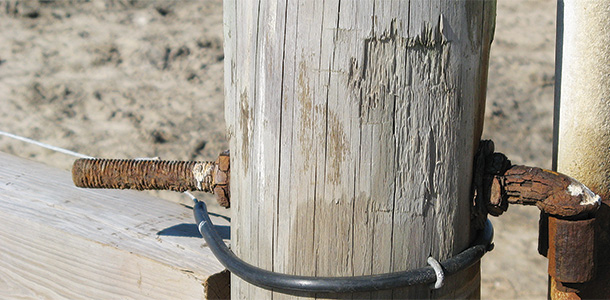
Ten to 12 feet of water covered the Edwards, Jackson, White and other ranches and farms on the east side of the county.
“I was lucky,” explains White. “I got an urge to sell my calves early and I did, just before Ike became a threat.
“When we learned that the hurricane would hit Chambers County, I moved my cattle near to the Edwards Ranch headquarters, where the ground is higher.
“But it was not far enough. Edwards’ and my cattle swam over the fences to higher ground. We had to find them after the storm and bring them back home. Some of them returned home on their own.”
“Tree rows along ditch and canal banks caused a lot of problems,” adds Edwards. “The water was high enough to allow cattle to swim over fences, but some ranchers lost cattle that got caught in the tree lines.
“The force of the water destroyed all our fences, and I had to rebuild 35 miles of them.”
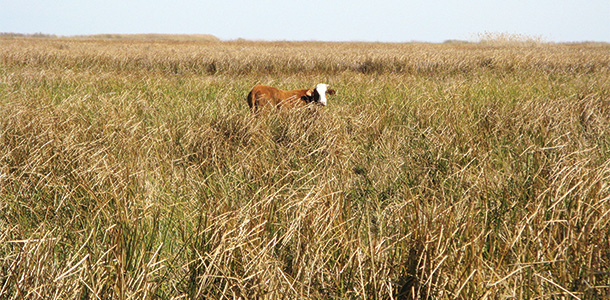
“The storm really made a mess,” Dean says. “I picked up debris for three years after Ike. The old ranch house was completely destroyed, so it’s a good thing we live in a sturdy house in Anahuac.”
“Animal nutrition is another problem with which we have to contend,” Dean continues. “The grass contains sufficient protein for a few weeks after green-up in the spring, and then it is leached out. To deal with the problem, we supplement protein in liquid feed.”
“Rust and rot also add to our expenses,” says White. “Fence posts rot and wire rusts. A fence lasts eight to 12 years unless it is along the beach, where its life expectancy is about three years.”
When asked how they can compete with their high input costs, Dean replied that the coastal prairie grows more forage per acre and stocking rates are higher. The larger amount of cattle compensate for the added expenses.
An unusual challenge to some of the ranchers on the coastal prairie is the Gulf Intracoastal Waterway that stretches from Brownsville, Texas, to the Okeechobee waterway at Fort Meyers, Florida.
The Chambers County portion was constructed in the early 1900s, leaving about 40 percent of the White Ranch between the canal and the Gulf of Mexico.
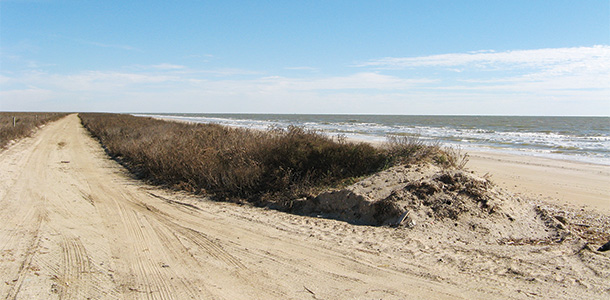
In the early days before trucking was available, ranchers swam their cattle across the 600-foot-wide, 12-foot-deep waterway.
Today, White continues to swim his cattle across the canal twice a year because there aren’t any roads suitable for hauling cattle.
Raising cattle on the Texas northern coastal prairie has a lot of challenges, but the legacy ranchers wouldn’t do it anywhere else. ![]()
Robert and Janelle Fears are freelance writers based in Texas.
PHOTOS
PHOTO 1: Edwards Ranch heifers in a pre-conditioning program for the feedlot.
PHOTO 2: Looking across the Gulf Intracoastal Waterway at one of the set of corrals that are both sides of the canal. Cattle are gathered in the corrals and driven through a wing into the canal. Their calves are hauled to the other side so the cows will swim to them.
PHOTO 3: Texas Coastal Prairie ranchers use annual ryegrass, rice stubble and marsh grasses for winter grazing.
PHOTO 4: David Edwards with his heifers.
PHOTO 5: Marsh grasses are green and palatable from the point of emergence to a height of 3 to 4 inchess. The marshes are burned about every two years to maintain good-quality forage.
PHOTO 6: These cattle show the typical crossbreeding programs – Brahman bred to Charolais, Hereford and Angus.
PHOTO 7: Rusting gate hinge on a beach fence rebuilt in 2009 after Hurricane Ike.
PHOTO 8: Cow on beach pasture. Plants are saltgrass, sedges, rushes and cordgrass.
PHOTO 9: The beach road into the White Ranch pastures. This is why they can’t use semi trucks to carry cattle into and out of these pastures. Photos by Robert Fears.






